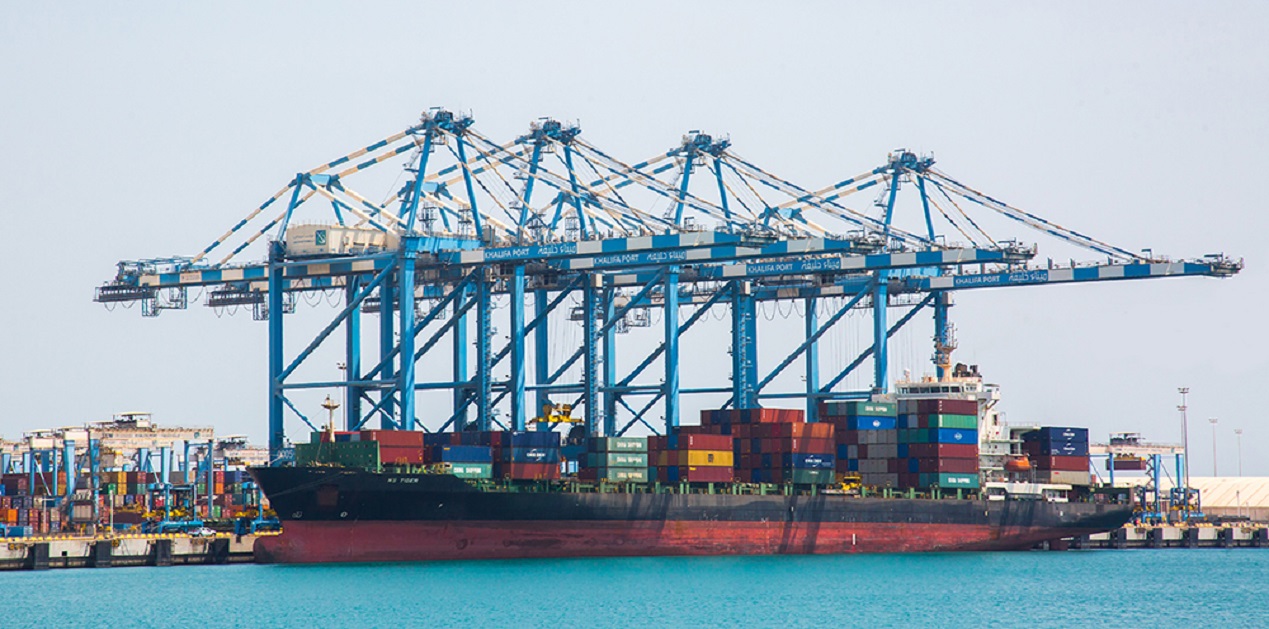The Houthi attack using ballistic missiles and drones at an oil refinery in Abu Dhabi’s Musaffah Industrial City that killed two Indians and one Pakistani national on 17 January 2022 has drawn attention to the United Arab Emirates (UAE)’s role in the Yemen conflict. The commentary seeks to identify the reasons for Houthis’ direct confrontation with the UAE and analyse its ramifications on the continuing war in Yemen.
UAE’s Intervention in Yemen
The UAE along with Saudi Arabia launched a military campaign against the Houthi movement that captured the capital, Sanaa in September 2014 and ousted the internationally recognised government under Abdrabbuh Mansour Hadi in January 2015. According to the Saudi-UAE axis, the Houthis are seen as a proxy of Iran due to their shared sectarian identity. The rivalry with Iran has played a major role in shaping Saudi Arabia and the UAE’s Yemen policy aimed at neutralizing the Houthi challenge to its regional supremacy.
The UAE has undergone a significant shift in its external interests adopting a more interventionist approach to shape the course of events in the states undergoing turmoil since 2011 Arab Spring. The UAE after launching the military campaign carried out airstrikes on Houthi military camps, weapons stores and economic assets. The Emirati government since July 2019 has gradually disengaged and reduced direct military campaigns. The limited tactical retreat from Yemen can be seen in the light of the international condemnation over the role of the Arab coalition in perpetuating the humanitarian crisis. The UAE’s military strategy largely failed to uproot the Houthis. Abu Dhabi became increasingly cautious after rise in drone and rocket strikes on Saudi Arabia’s energy and economic assets; airports and civilian centres. Therefore, the decision to withdraw from Yemen is backed by efforts to protect its assets as the cost of actively fighting the Houthis outweighs the benefits.
Abu Dhabi however, continued to provide financial, military and technical support to the forces loyal to the Hadi government; Southern Transitional Council (STC) and local militias. The UAE’s support has been crucial for the STC to assert itself politically and militarily against the Hadi government in the southern areas. For UAE, the initial goals i.e. neutralizing Houthi control in Sana’a and restoring Hadi’s rule has been de-prioritized in favour of consolidating its interests by supporting the STC. The UAE has also built military bases in Mayun and Socotra islands[1].
Houthi Activities in 2021
In 2021, Houthi forces further improved their strike capabilities targeting Saudi and coalition forces throughout the year using unmanned aerial vehicles (UAVs), cruise and ballistic missiles etc. According to the Center for Strategic & International Studies (CSIS), the number of Houthi attacks per month doubled against Saudi Arabia and coalition targets over the first nine months of 2021 as compared to the same period in 2020[2]. Houthi forces also rejected the peace deal proposed by Saudi Arabia that included UN-supervised ceasefire, reopening vital air and sea links, and convening political negotiations for falling short of fulfilling demand to re-open Sana’a airport, Hodeidah port and freeing 14 ships held by coalition forces[3]. In terms of the ground offensive, Houthi fighters overwhelmed government forces on several occasions. It was feared that the capture of Marib city would be the beginning of the end of the government-aligned forces under Hadi[4].
The introduction of the Giants Brigades comprising of southern Yemenis and part of the Joint Forces has tilted the power balance in favour of the Hadi government since December 2021[5]. The government-aligned forces have reclaimed the entire Shabwa governorate and forced out Houthi fighters. The government-aligned forces are currently advancing towards Marib and Al-Bayda governorates. The anti-Houthi elite forces responsible for thwarting advances by Houthis have been trained and financed by the UAE. Abu Dhabi’s help was, therefore, crucial to reverse the gains by the Houthis[6]. Notably, the Houthi offensive in Marib in 2021 weakened the Muslim Brotherhood-affiliated Islah Party, one of the dominant factions within the anti-Houthi forces operating in the region. The UAE that is ideologically opposed to the Muslim Brotherhood has succeeded to fill the power vacuum in Marib by supporting its allied local militias and weakening Islah’s influence[7].
Abu Dhabi attack as well as the seizure of the Emirati vessel, Rwabee on 3 January 2022 indicates Houthis’ growing frustration after the recent setbacks[8]. The group through the missile and drone strikes in Abu Dhabi have warned that it would create an adverse security situation within the UAE by harming its commercial interests and investments. It demanded that the UAE should withdraw from Yemen politically, militarily, and economically and stop its allies from conducting any further ground offensive. The Houthis after the military setback within Yemen are seeking to send message that it would continue to remain a formidable force capable of attacking both Saudi Arabia and the UAE[9]. The UAE has been relatively safe from Houthi strikes and in fact, the last Houthi claimed attack on Emirati territory happened in 2018 in response to military actions in the Red Sea Coast and fight over control over the port city of Hodeidah. The Houthi strike on Emirati territory forced it to change tactics facilitating the limited retreat since 2019[10].
Likely Ramifications
The latest attack can be seen as a gamble by Houthis to pressurise the UAE to limit its involvement in Yemen or face economic and security consequences. The said strike is likely to lead to escalation including Saudi and Emirati air raids in Sanaa and ground offensive in Marib and Al Bayda by their allies. From the UAE’s perspective, the situation has changed since 2018 in terms of its military policy i.e. tactical and financial support to local allies rather than troop presence on the ground. It has to be seen whether the UAE is ready to risk further attacks on its civilian centres and economic and energy assets.
The actions by Houthis at the same time are likely to affect UAE’s relations with Iran that ideologically and militarily supports the Houthis. Iran while providing arms and technology to the group does not control their strategic and political approach. The Houthis over the period of time has displayed tactical flexibility based on changing dynamics to suit its interests. Nonetheless, Iran would continue to play a crucial role in the dynamics between Houthis and the Saudi-UAE axis.
The latest conflict has brought to light the direct ramification of the unstable security regional environment on the Indian diaspora. In May 2021, an Indian woman was killed by Hamas’ rocket within Israel. During the seizure of an Emirati ship by Houthis in early January 2022, seven Indian nationals were taken, hostage. The current attack on Abu Dhabi has further displayed the risks faced by the diaspora population. Indian expatriate community accounting around 3.5 million is the largest group in UAE contributing 30 percent of the state’s population. In Abu Dhabi, 15 percent of the total population are Indians[11]. In case of further escalation, the diaspora community serving in all sectors of the economy are at high risk. In light of the recent developments, the Indian government should engage with the UAE and Saudi Arabia to ensure the safety and welfare of its nationals.
Endnotes :
[1]Middle East Monitor, “UAE building a 'mysterious' air base on Mayun island near Yemen,” Middle East Monitor, May 26, 2021, at https://www.middleeastmonitor.com/20210526-uae-building-a-mysterious-air-base-on-mayun-island-near-yemen/ (Accessed January 17, 2022).
[1]Center for Strategic & International Studies, “The Iranian and Houthi War against Saudi Arabia,” Center for Strategic & International Studies, December 21, 2021, at https://www.csis.org/analysis/iranian-and-houthi-war-against-saudi-arabia (Accessed January 18, 2022).
[3]L. Wamsley, “Yemen: Saudi Arabia Proposes A Peace Deal, But Houthis Say It's Not Enough,” NPR, March 22, 2021, at https://www.npr.org/2021/03/22/980031673/yemen-saudi-arabia-proposes-a-peace-deal-but-houthis-say-its-not-enough (Accessed January 18, 2022).
[4]S. Snyder, “Yemen’s most stable city threatened by Houthi takeover,” The World, February 19, 2021, at https://theworld.org/stories/2021-02-19/yemens-most-stable-city-threatened-houthi-takeover (Accessed January 19, 2022).
[5] Middle East Eye, “Yemen: Who are the UAE-backed Giants Brigades?” Middle East Eye, January 12, 2022, at https://www.middleeasteye.net/news/yemen-giants-brigades-uae-backed-who (Accessed January 19, 2022).
[6]S. Al-Batati, “Yemeni troops recapture district in Shabwa from Houthis,” Arab News, January 2, 2022, at https://www.arabnews.com/node/1996901/middle-east (Accessed January 19, 2022).
[7]A. Al-Shamahi, “What is behind the Houthi attacks in the UAE?,” Al Jazeera, January 17, 2022, at https://www.aljazeera.com/news/2022/1/17/explainer-houthi-attacks-abu-dhabi-uae (Accessed January 18, 2022).
[8]Al Jazeera, “Yemen: Houthis seize UAE vessel carrying ‘military supplies,” Al Jazeera, January 3, 2022, at https://www.aljazeera.com/news/2022/1/3/yemen-houthis-seize-uae-vessel-carrying-military-supplies (Accessed January 19, 2022).
[9]R. Philipose, “Explained: Who are the Houthis and why did they attack UAE?” The Indian Express, January 19, 2022, at https://indianexpress.com/article/explained/abu-dhabi-drone-attack-houthis-explained-7730996/ (Accessed January 19, 2022).
[10]Al Jazeera, “What’s behind the Houthis’ attack on the UAE?” Al Jazeera, January 18, 2022, at https://www.aljazeera.com/amp/program/inside-story/2022/1/18/whats-behind-the-houthis-attack-on-the-uae (Accessed January 18, 2022).
[11]Indian Embassy, Abu Dhabi, “Indian Community in UAE,” Indian Embassy, Abu Dhabi, 2022, at https://www.indembassyuae.gov.in/indian-com-in-uae.php (Accessed January 19, 2022).
(The paper is the author’s individual scholastic articulation. The author certifies that the article/paper is original in content, unpublished and it has not been submitted for publication/web upload elsewhere, and that the facts and figures quoted are duly referenced, as needed, and are believed to be correct). (The paper does not necessarily represent the organisational stance... More >>
Image Source: https://www.adports.ae/wp-content/uploads/2018/09/Built-on-Technology.jpg










Post new comment